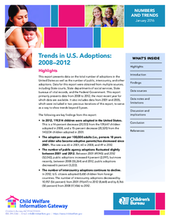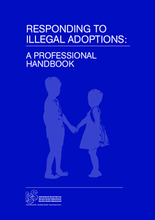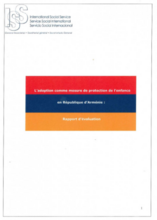Displaying 421 - 430 of 654
The Children (Amendment) Act of 2016 is an Act to amend the Children's Act Cap. 59 of Uganda to enhance the protection of children; to strengthen the provision for guardianship of children; to strengthen the conditions for intercountry adoption; to prohibit corporal punishment; to provide for the National Children Authority; repeal the National Council for Children Cap. 60 and to provide for other related matters.
This three-part video series shows how a fictional organization, Greene County Department of Human Services, set out to improve permanency for children and youth by increasing the number of available foster and adoptive homes using data-driven decision making (DDDM).
This report presents data on the total number of adoptions in the United States as well as the number of public, intercountry, and other adoptions.
ISS has developed a handbook for professionals working in the adoption field that provides guidance on how to respond when illegal practices have been identified in an adoption case.
This article from the Case Western Reserve Law Review journal in the United States presents a proposal to reduce, and ultimately eliminate, the rehoming of adopted children in the United States.
This chapter discusses the practice of child circulation in Ghana.
Ce rapport est basé sur une évaluation indépendante du SSI réalisée en 2015, sur le mandat de l'UNICEF Arménie et du Ministère de la Justice Arménien. Il s’inscrit dans le cadre d’un projet de réforme lancé par les autorités arméniennes en vue d’améliorer le système de protection de l’enfance et de mieux intégrer les principes de la Convention de La Haye dans la pratique de l’adoption.
This article studies different medical and psychological models of orphanhood and the effects these models have on the resiliency of orphanhood.
As part of phase one of the development of the Martin James Foundation's Asia Care Network, comprehensive studies of the care system in each country were conducted to highlight the need for developing alternative care systems across South-East Asia. This case study highlights the relevant data from the Philippines.
A press release from the Ministry of Women and Child Development, Government of India recapped a series of new initiatives by the Ministry during 2015. The achievements relevant to children’s care are briefly described below and include the launch of the flagship programme Beti Bachao Beto Padhao for protection of the girl child; several initiatives to track, restore, and rehabilitate missing children; and adoption reforms and a new foster care system.





